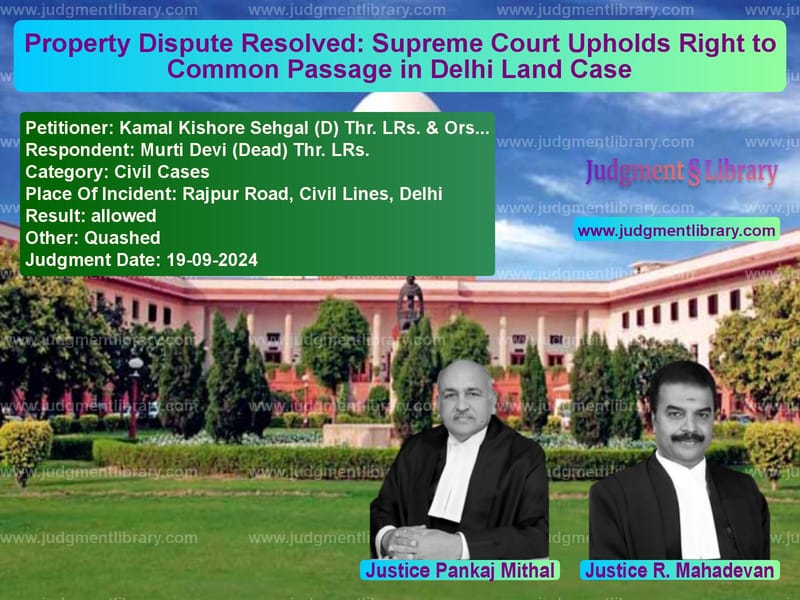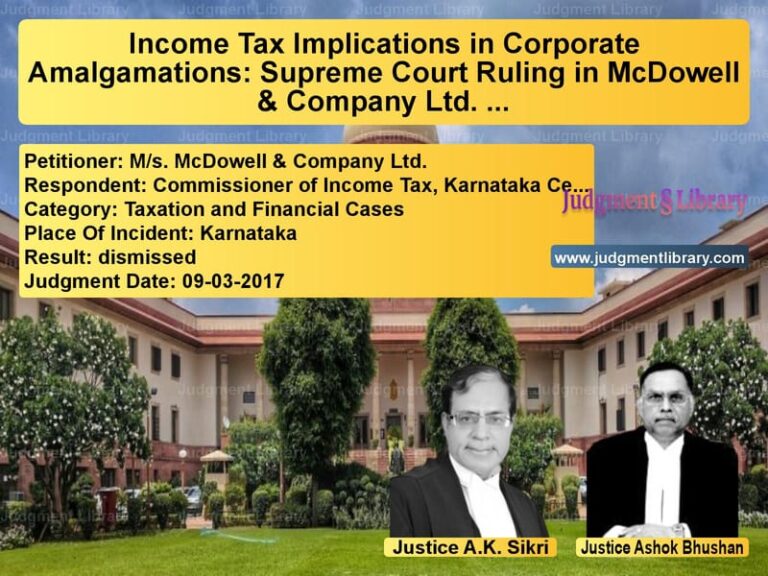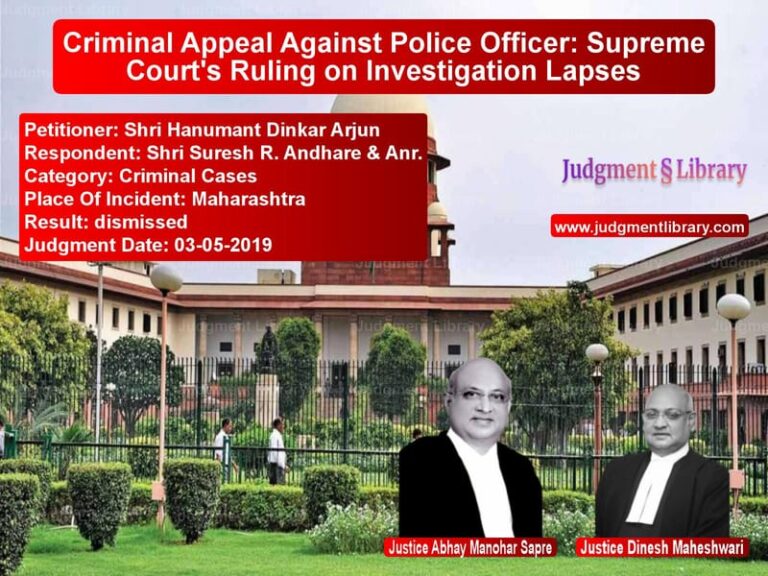Property Dispute Resolved: Supreme Court Upholds Right to Common Passage in Delhi Land Case
The legal dispute between Kamal Kishore Sehgal & Ors. (appellants) and Murti Devi & Ors. (respondents) revolved around the interpretation of a common passage mentioned in property sale deeds. The Supreme Court was called upon to decide whether the entire passage leading from the Battery Lane to the back portion of the property was for common use or if only a specific portion was meant for shared access.
Background of the Case
The property in question, located at Rajpur Road, Civil Lines, Delhi, was originally owned by Jaspal Singh. In 1972, he purchased a plot of 3116 square yards, of which he became the absolute owner of 1398 square yards. In 1974, he divided his land into two equal portions, A (front portion) and B (back portion), each measuring 699 square yards. He sold:
- Portion A to Murti Devi (the plaintiff, now represented by her legal heirs).
- Portion B to Kamal Kishore Sehgal (the defendant, now represented by his legal heirs).
Since Portion B had no direct access to Battery Lane, the sale deed of Portion A stipulated that a 15-feet-wide common passage would be left for access to Portion B. However, there was no similar clause in the sale deed of Portion B stating that its owners would also leave a common passage.
Key Legal Dispute
The respondents (owners of Portion A) claimed that the entire passage, including the segment running across Portion B, should be a common passage. They argued that since the site plan attached to both sale deeds marked the passage in green, it was meant for joint use.
The appellants (owners of Portion B) countered that only the passage running through Portion A was a common passage, and the part running through Portion B was their exclusive property.
Trial Court’s Decision
The trial court ruled in favor of the appellants, holding that:
- The sale deed of Portion A explicitly stated that a passage had to be left for the benefit of Portion B.
- There was no reciprocal condition requiring Portion B to leave a passage for the benefit of Portion A.
- The term “common passage” referred only to the segment marked X-Y (on Portion A), and not to segments Y-Z and Z-Z1 (on Portion B).
Consequently, the trial court dismissed the suit of the respondents.
High Court’s Ruling
The respondents appealed to the High Court, which overturned the trial court’s ruling. The High Court held that the entire passage from X-Z1 was a common passage accessible to both parties. The ruling emphasized that:
- The site plan attached to the sale deeds marked the entire passage as common.
- Restricting access to only part of the passage would defeat the purpose of designating it as a common passage.
As a result, the High Court decreed the suit in favor of the respondents, allowing them unrestricted access to the entire passage.
Supreme Court’s Judgment
The appellants challenged the High Court’s decision before the Supreme Court. After reviewing the sale deeds and site plans, the Court ruled in favor of the appellants, restoring the trial court’s judgment.
Key Observations by the Supreme Court
1. Interpretation of Sale Deeds
The Supreme Court emphasized that legal documents must be interpreted according to their clear language. The sale deed of Portion A explicitly mentioned a 15-feet-wide passage to be left for access to Portion B, but there was no reciprocal clause in the sale deed of Portion B.
“A plain reading of the recitals makes it crystal clear that the plaintiff-respondents were supposed to leave a 15-feet-wide passage for the benefit of Portion B, but there was no obligation on the owners of Portion B to leave any passage for the use of Portion A.”
2. Limitation of Common Passage
The Court held that the common passage mentioned in the sale deed was limited to the X-Y segment, which was carved out of Portion A. The passage beyond Y-Z and Z-Z1 was part of Portion B and was not designated as a common passage.
Read also: https://judgmentlibrary.com/equitable-mortgage-and-delay-in-justice-supreme-courts-landmark-ruling/
“The sale deed of Portion B categorically states that the owners will have access through the 15-feet-wide passage left by the owner of Portion A. There is no recital that they must also leave a passage for the benefit of Portion A.”
3. Incorrect Interpretation by the High Court
The Supreme Court found that the High Court had misinterpreted the term “common passage” by extending it to the entire stretch up to Z-Z1. The Court ruled that the High Court placed undue emphasis on the site plan while disregarding the explicit terms of the sale deeds.
“The High Court misconstrued the two sale deeds by assuming that the alignment of the passage made the entire stretch a common passage. However, the sale deeds provide no such stipulation.”
Final Verdict
The Supreme Court set aside the High Court’s judgment and reinstated the trial court’s decision. The ruling clarified that:
- The common passage extended only from X-Y, which was on Portion A.
- The owners of Portion A had no right over the passage Y-Z and Z-Z1, which was on Portion B.
- The respondents’ claim to use the entire passage was legally unfounded.
As a result, the suit filed by the respondents was dismissed, affirming that the passage beyond X-Y was exclusive to the appellants.
Implications of the Judgment
This ruling underscores the importance of:
- Clear contract interpretation: The Court emphasized that sale deeds must be interpreted strictly according to their terms.
- Property rights: A property owner cannot claim rights over another’s land unless explicitly stated in legal documents.
- Understanding site plans: The Supreme Court clarified that site plans cannot override the textual provisions of a sale deed.
The case serves as a crucial precedent in property disputes involving easement rights and interpretation of common passages.
Petitioner Name: Kamal Kishore Sehgal (D) Thr. LRs. & Ors..Respondent Name: Murti Devi (Dead) Thr. LRs..Judgment By: Justice Pankaj Mithal, Justice R. Mahadevan.Place Of Incident: Rajpur Road, Civil Lines, Delhi.Judgment Date: 19-09-2024.
Don’t miss out on the full details! Download the complete judgment in PDF format below and gain valuable insights instantly!
Download Judgment: kamal-kishore-sehgal-vs-murti-devi-(dead)-th-supreme-court-of-india-judgment-dated-19-09-2024.pdf
Directly Download Judgment: Directly download this Judgment
See all petitions in Property Disputes
See all petitions in Specific Performance
See all petitions in Judgment by Pankaj Mithal
See all petitions in Judgment by R. Mahadevan
See all petitions in allowed
See all petitions in Quashed
See all petitions in supreme court of India judgments September 2024
See all petitions in 2024 judgments
See all posts in Civil Cases Category
See all allowed petitions in Civil Cases Category
See all Dismissed petitions in Civil Cases Category
See all partially allowed petitions in Civil Cases Category







